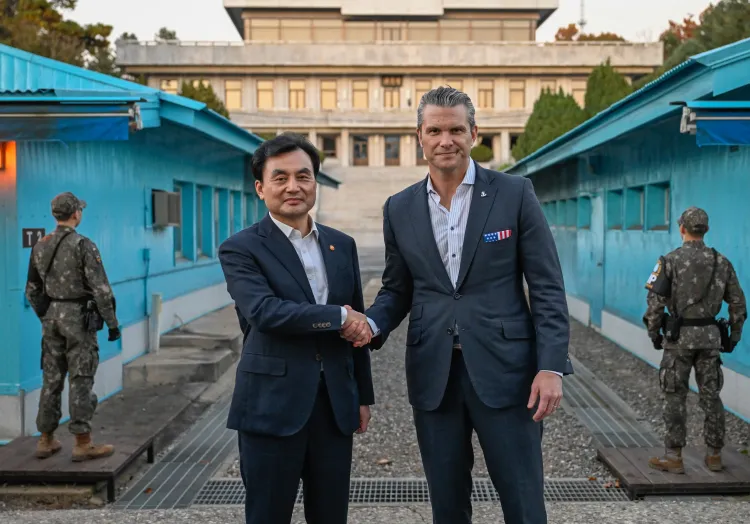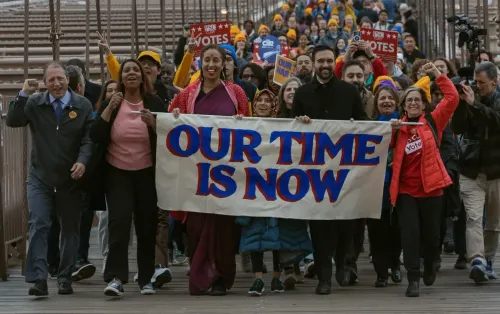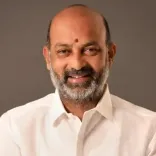What Did Hegseth's Visit to the Demilitarized Zone Mean for the Koreas?

Synopsis
Key Takeaways
- The DMZ visit represents a renewed commitment to diplomacy between South Korea and the US.
- Both defense leaders emphasized the importance of their alliance.
- The SCM will focus on several strategic defense issues.
- The transition of OPCON remains a priority for South Korea's administration.
- The visit highlights the ongoing tensions on the Korean Peninsula.
Seoul, Nov 3 (NationPress) - On Monday, South Korea's Defence Minister Ahn Gyu-back and US Defence Secretary Pete Hegseth made a significant visit to the Demilitarized Zone (DMZ) that divides the two Koreas, highlighting their commitment to revitalizing diplomacy with North Korea while maintaining a strong unified defense strategy.
The defense leaders toured Observation Post Ouellette, a UN Command military base near the Military Demarcation Line, and the Joint Security Area (JSA) located within the DMZ. This marks the first joint visit by defense chiefs of both nations to this crucial area since October 2017.
Spanning 250 kilometers in length and 4 kilometers in width, the DMZ serves as a buffer between the two Koreas, which technically remain at war since the 1950-53 Korean War concluded with an armistice rather than a formal peace treaty.
It is unclear if Hegseth delivered a message to North Korea during his time at the DMZ, as reported by Yonhap. Observers speculate that the Secretary might have conveyed a message of peace regarding the fractured Korean Peninsula instead of issuing warnings to Pyongyang, considering Seoul and Washington's intentions to foster dialogue with the unyielding regime.
After the visit, Ahn informed reporters that Hegseth seemed impressed by the collaborative search operation conducted by South Korean and US forces at the DMZ, expressing satisfaction with the allies' defensive readiness.
Ahn emphasized that Hegseth remarked on the symbolic significance of their visit to the JSA, a pivotal location in inter-Korean relations and the site of the historic meeting between US President Donald Trump and North Korean leader Kim Jong-un.
The defense minister also noted that Hegseth gained insight into the proximity of the South Korean Daeseongdong Freedom Village to the North during their visit.
This visit took place shortly after Hegseth's arrival at Osan Air Base in Pyeongtaek, approximately 65 km south of Seoul, as part of his two-day trip to Korea.
On Tuesday, Ahn and Hegseth will convene for the annual defense discussions known as the Security Consultative Meeting (SCM).
During this meeting, both parties are expected to address various key alliance matters, including the transfer of wartime operational control (OPCON) from Washington to Seoul, South Korea's defense expenditure, and the overall joint defense strategy.
The transition of OPCON is anticipated to be a focal point during the SCM, particularly as South Korean President Lee Jae Myung's administration aims to regain wartime OPCON within its five-year term ending in 2030.
Seoul's initiative for this transfer coincides with the South Korean military's intensified efforts to enhance its autonomous defense capabilities, alongside Washington's encouragement for Seoul to assume greater security responsibilities.
The two nations have been collaborating on a conditions-based transition of OPCON. South Korea relinquished operational control of its forces during the Korean War and regained peacetime OPCON in 1994, yet wartime OPCON remains with the US.
Additionally, on Tuesday, Hegseth is scheduled to meet with President Lee Jae Myung and engage with US troops stationed at Camp Humphreys in Pyeongtaek, the largest US military base overseas, to express gratitude to them and their families.
This visit to Korea concludes Hegseth's tour of Asia, which included stops in Hawaii, Japan, Malaysia, and Vietnam.









